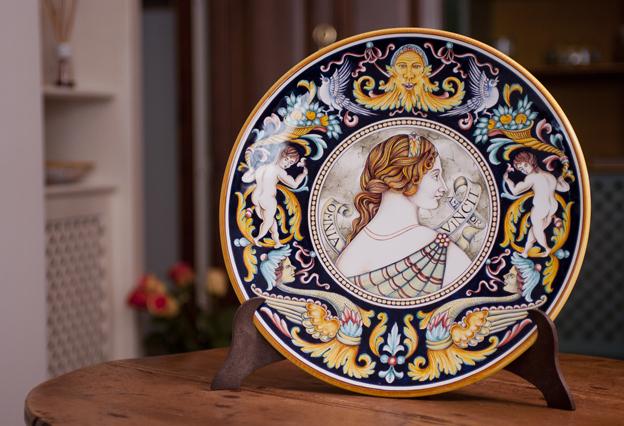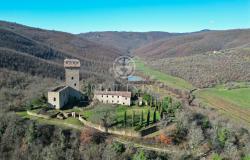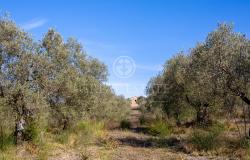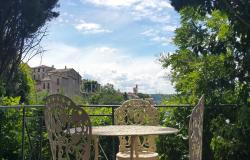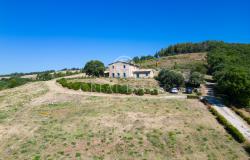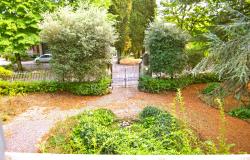When it comes to shopping for unique and traditional crafts, Umbria is a good place to be. This region in central Italy, whose artisanal traditions go back to Etruscan times, boasts a number of artisans’ workshops (botteghe artigiane), where highly-skilled craft-masters produce superb objects using ancient techniques mixed with modern design.
Here’s a look at what to buy in Umbria for those who love authentic, Made in Italy items.
Ceramics
“Ceramics are the obvious focus for authentic arts of Umbria,” says Laura Morelli, the author of several guidebooks about artisanal traditions and shopping for authentic crafts in Italy. “Deruta, Gubbio, Gualdo Tadino form kind of a ‘holy trinity’ of ceramics capitals there.”
Deruta has been crafting ceramics since the early Middle Ages. The heyday of production was in the Renaissance, when ceramic makers developed unique local styles, such as ‘Bella Donna’ plates, which featured profile portraits of a beautiful woman, often intended as engagement or wedding gifts for lovers.
Perhaps the best way to begin your hunt for a favorite ceramics piece is at the Museo regionale della ceramica (Museum of Ceramics), located inside the former convent of San Francesco. Here, you can learn about the history of ceramics production in central Italy and admire a few prestigious pieces.
The museum is in the old part of town, which, like many Umbrian towns, stands on a hill. Here, you will find many ateliers and shops selling ceramics of all kinds and prices. “Avoid the larger, more industrialized operations on the outskirts of town that advertise heavily along the highway,” warns Morelli in her Made in Italy book. “The prices are cheaper but so is the quality.”
With 300 active ceramics producers, Deruta is considered the ceramics capital of Umbria and its wares are exported worldwide.
Some of the most renowned ceramics producers in Deruta include:
Ubaldo Grazia – the most ancient workshop in Deruta, active since 1500, it has managed to stay up-to-date by working with contemporary designers. The workshop features a small museum and you can even take a class in majolica ceramics decoration.
Ceramiche Sberna – one of Deruta’s most prestigious ceramics producers, Sberna makes hand-made ceramics following the techniques learned by the company’s forefather at the beginning of the 1900s from expert artisans masters.
G&P Ceramiche Artistiche – founder Graziano Pimpinelli still supervises all phases of production. The result is some of the finest ceramics in town. Customers can observe the artisans at work.

[Deruta ceramics.]
Gualdo Tadino
On the lower flanks of Mount Penna in the Apennines, Gualdo Tadino developed two decorative traditions that are still used today. The first was introduced in the 1500s, when “pieces were fired three times to achieve a shiny, lustrous finish imitating metalwork,” explains Morelli in her Made in Italy book. In the 1800s, artisans went a step further, enriching this technique with very ornate forms.
Gubbio
One of Umbria’s most charming towns, Gubbio is home to different styles of ceramics decorations, which include:
Zaffera style: blue or green glaze over white, inspired by Moorish designs;
Lusterware: uses a third firing to impart a slick, glossy finish;
Raphaelesque (a raffaellesche): typically Renaissance motifs;
Neo-Renaissance: Renaissance motifs with a Victorian decorative flair.
“Gubbio doesn’t have the same world recognition that Deruta does, which means you can buy high-quality wares at better prices,” writes Morelli.
Goldsmith Art

[Etruscan-inspired gold jewelry from Umbria.]
The art of goldworking is still practiced in Umbria; artisans look to Etruscan traditions, and especially the granulation technique, for their modern creations. Begin your discovery of this ancient art at Perugia’s Museo Archeologico Nazionale dell’Umbria, home to outstanding Etruscan jewels.
Perugia, along with Spoleto, Terni, Orvieto, and Torgiano, are the main centers of goldsmith production. In Orvieto, Museo Faina houses a section devoted to this ancient art, where you can admire the sophistication of Etruscan jewelry.
Where:
Oro degli Etruschi - in Torgiano, listed among Italy’s most beautiful villages, this workshop produces fine pieces inspired by the goldsmith art of the Etruscans. Live demos are organized.
Fabrics
Fabric-making in Umbria also has roots in a distant past, with production traced back to the 12th century. Unique styles and techniques have made the craft famous all over Europe. Examples include:
Perugia’s embroidery with the typical Grifo, a symbol of the city, or Renaissance geometric patterns (tablecloths are especially sought-after);
Assisi stitch, another particular type of embroidery which was already practiced in the 13th century by nuns;
Lace making in Orvieto;
Cashmere – Umbria is a main production center for cashmere, with 500 small producers and a company famous worldwide, Brunello Cucinelli. In Solomeo, the company’s factory store on piazza Alberto della Chiesa offers high-quality garments at discounted prices. Arnaldo Caprai, Barna and Cruciani are other famous names in cashmere production.

[Orvieto lace.]
A fun time to learn about Umbria’s rich craft traditions dating to the Middle Ages is during the Mercato delle Gaite festival, which takes place every June in Bevagna. For the occasion, the town travels back in time to the Middle Ages, with historic re-enactments, challenges among the four ‘gaite’ (neighborhoods), medieval banquets, and stands representing ancient crafts.
For more tips and listings on the best shopping in Umbria, buy Laura Morelli’s Made in Italy guidebook from our shop.
Learn about Gatto Matto Design, an artisan from Deruta, whose products are available in our shop.
